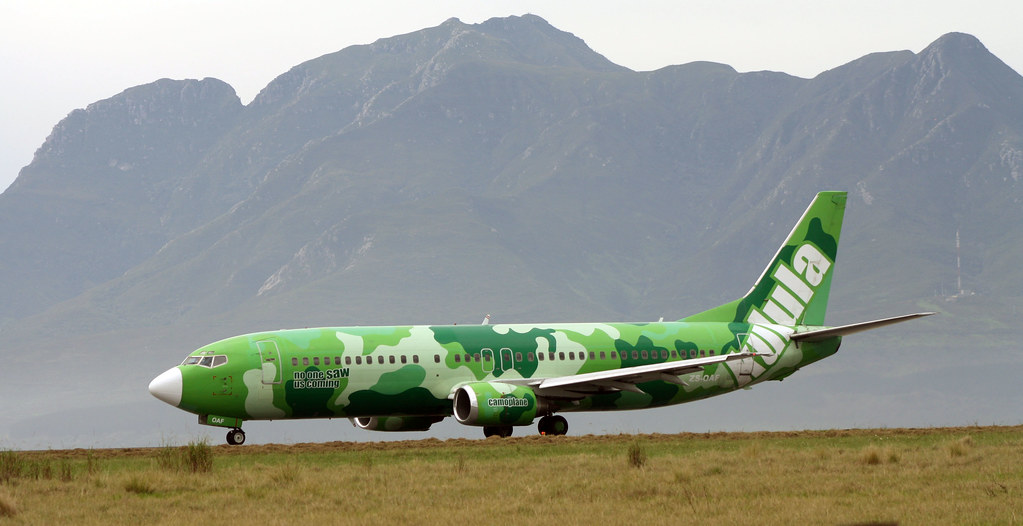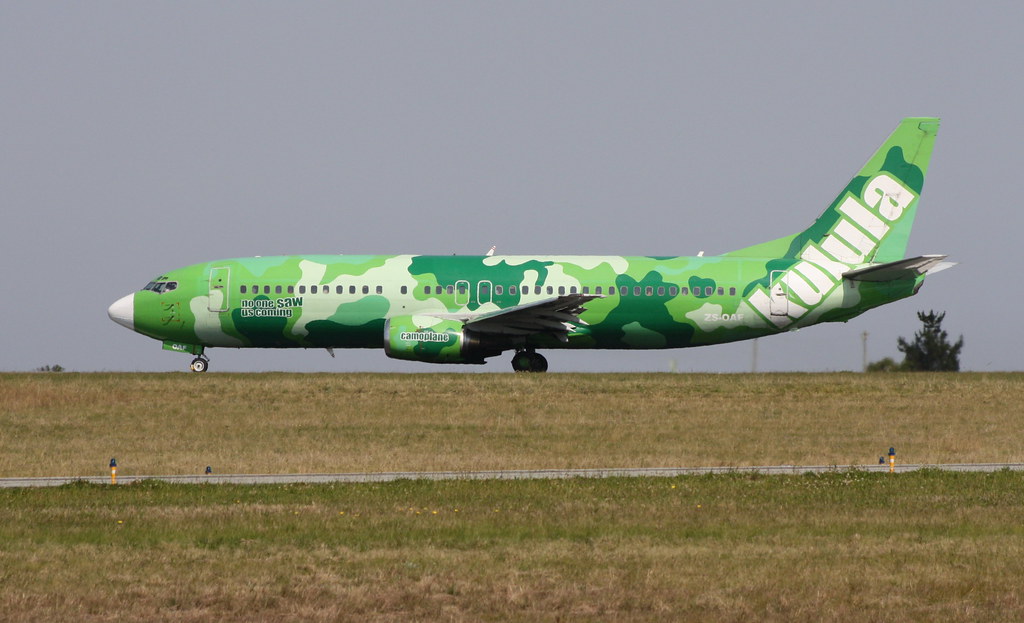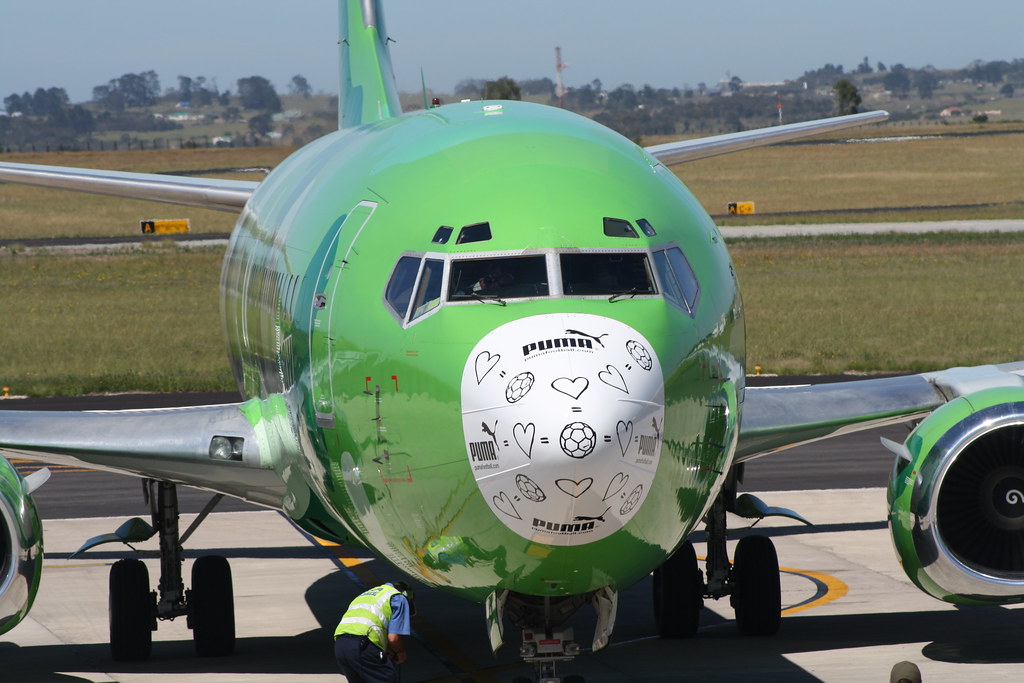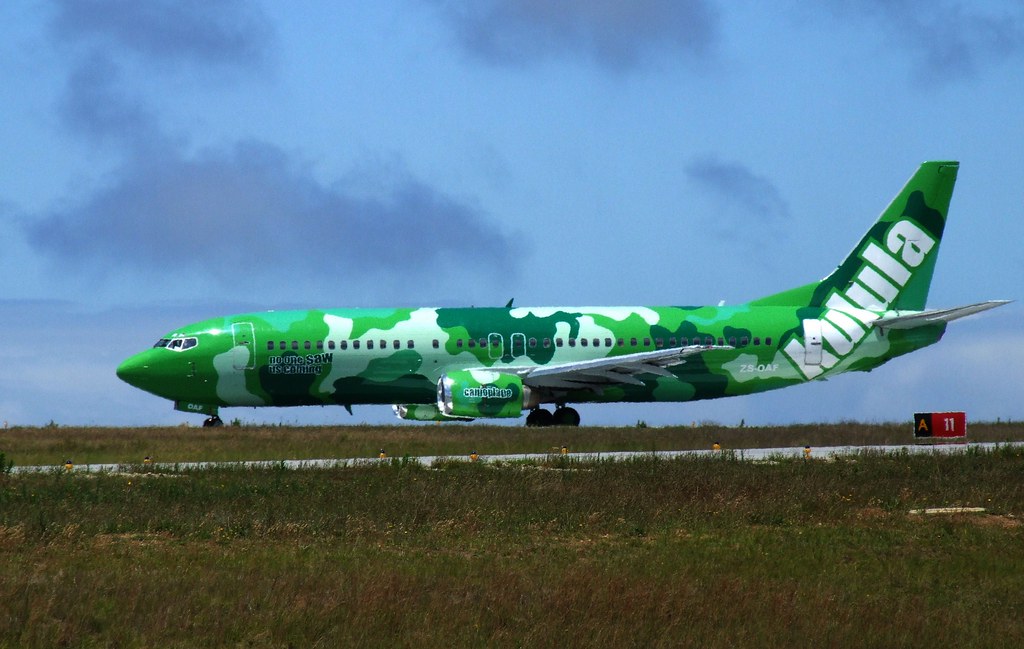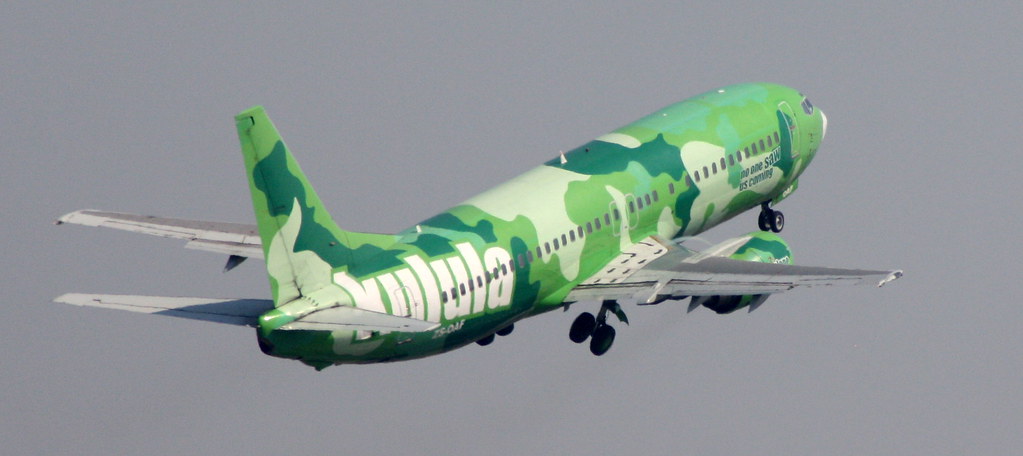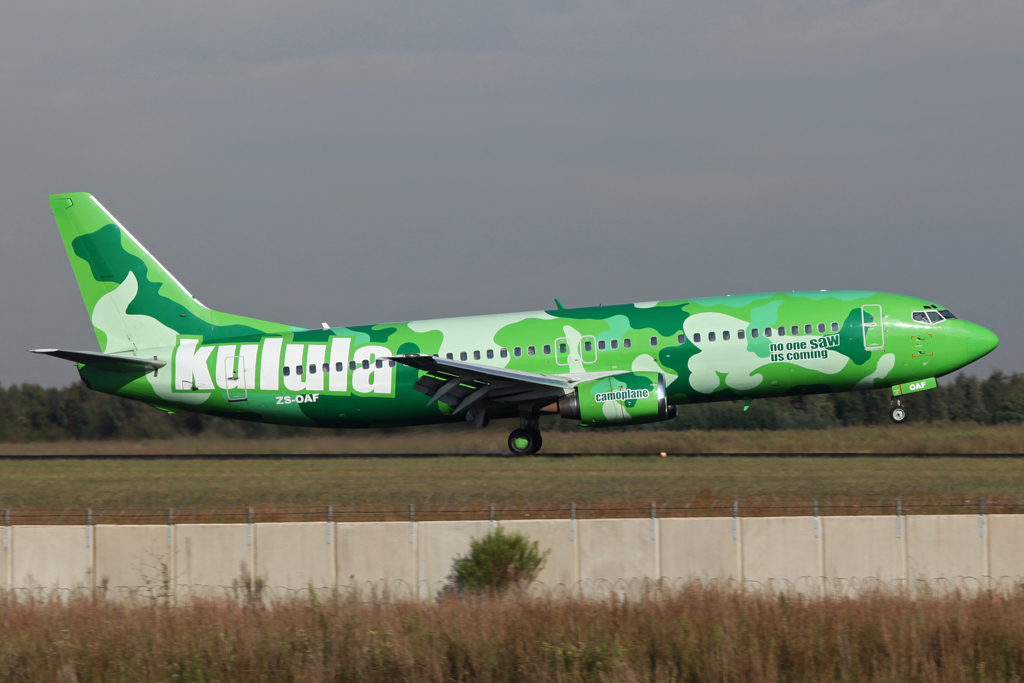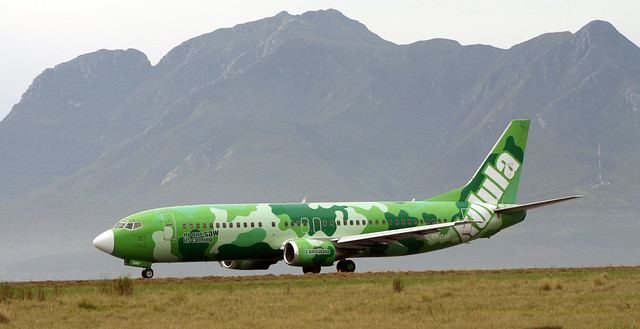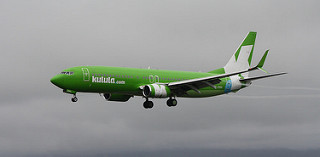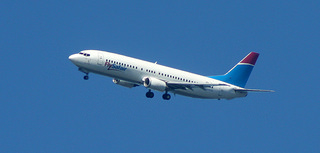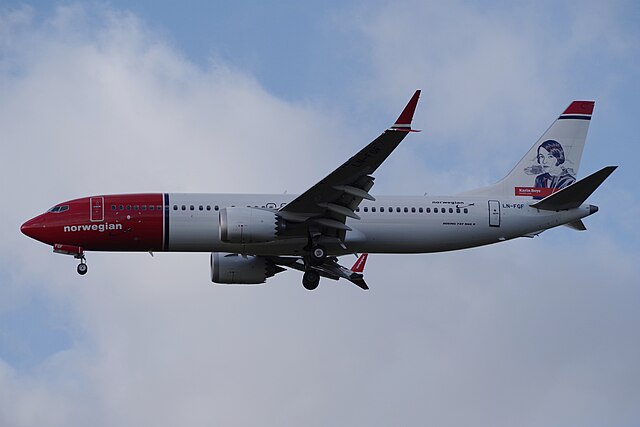Safair B734 near George on Nov 22nd 2020, transponder failure and loss of cabin pressure
Last Update: April 14, 2022 / 20:04:50 GMT/Zulu time
Incident Facts
Date of incident
Nov 22, 2020
Classification
Accident
Airline
Safair
Flight number
FA-134
Departure
Cape Town, South Africa
Destination
East London, South Africa
Aircraft Registration
ZS-OAF
Aircraft Type
Boeing 737-400
ICAO Type Designator
B734
South Africa's CAA (SACAA) opened an investigation. In a preliminary report the SACAA reported 9 passengers received minor injuries. The air duct at the left hand air conditioning system had failed drastically limiting the efficiency of the left air conditioning system.
The captain (37, ATPL, 7,924 hours total, 3,383 hours on type) was assisted by a first officer (31, ATPL, 5,050 hours total, 2,000 hours on type).
The SACAA reported that the cockpit voice recorder had not been secured during the subsequent ferry flight to Johannesburg (South Africa).
The SACAA reported that the transponder was no longer interrogated by SSR shortly after departure due to some activation malfunction. It began to respond to SSR interrogations again when the aircraft descended through 2500 feet MSL on approach to George.
The SACAA stated the investigation is still ongoing.
On Apr 14th 2022 the SACAA released their final report concluding the probable causes of the occurrence were:
The air/ground proximity sensor becoming defective, which rendered certain cues to remain in ground mode and causing certain warning lights to illuminate in the cockpit which required crew intervention, whilst certain cues functioned normally.
- Loss of cabin pressure, which was attributed to air leaking from the fuselage, including the aft cargo compartment door seal that was worn out. This situation was further aggravated by the left air-conditioning pack outlet duct fracture in an area that was previously repaired, which resulted in reduced air supply to the system.
The SACAA analysed:
2.2.1 Crew
The crew was confronted with some ‘non-normal’ situations as they became aware of multiple alerts. It is possible that a single malfunction could result in multiple flight deck indications. Once the cabin altitude warning activated, the crew dealt with the emergency checklist and initiated an emergency descent as required to FL100.
They also made the decision to divert to their nearest suitable aerodrome, which was FAGG, at which a safe landing was executed.
The injuries/medical treatment the passengers received after the occurrence are viewed as minor. The AIID classified the occurrence as a serious incident and conducted an investigation due to the rapid decompression in conjunction with the necessity to use oxygen masks by the crew.
According to the QAR data, the aircraft had nearly levelled off at its cruising altitude when the descent was initiated, and the crew stopped the descent in FL100. The aircraft was landed without further problems.
2.2.2 The Aircraft
What is concluded from an aircraft structure and aircraft systems is that the cabin altitude warning was triggered by multiple system failures and air leaking from the structure. In the summary below, the specific matters and how they were rectified after the aircraft was positioned from FAGG to its maintenance base at FAOR are highlighted:
1. A problem was encountered prior to departure where the two right doors 1R and 2R proved difficult to close; the assistance of a technician was required to close the doors. After several attempts, it was later confirmed that the doors ‘looked closed’ from the outside. According to the PIC, when he conducted a walkaround of the aircraft after landing at FAGG, he noted that the doors 1R and 2R were skew in their frames, with gaps at the top. With the doors not being in the correctly closed position, cabin air leaked from these door seals during flight, contributing to the cabin rate of climb rate of 600 to 700 ft/min.
These doors were adjusted as per the aircraft maintenance manual (AMM) requirements.
2. After take-off the cockpit crew observed several redundancies:
(i) No transponder, the unit remained in ground mode. It initially could not be determined if this was an aircraft problem or an SSR interrogation system error. It was later determined that this was indeed an aircraft system related occurrence.
(ii) No N1 (low pressure rotor speed) engine indication.
(iii) No LNAV or VNAV.
(iv) The flight management computer (FMC) lost position but came back on later with no LNAV.
(v) The auto throttle thrust stayed in the take-off configuration, and the crew disconnected auto throttle manually and continued with the flight with auto throttle disabled. It was determined that if the air/ground sensing system fails to “ground” mode the auto throttle cannot transition to the Throttle Arm position and it was, therefore, not possible to be armed.
(vi) When the crew retarded the thrust levers as they commenced with the emergency descent, the LOW IDLE amber warning light along with the MASTER CAUTION ENG indication activated, which alerted the crew (see Figure 1) that the engines will be entering the sub-idle range which is associated with an N1 rpm of 32% or less when in-flight. A low idle condition is brought about by the system sensing that flight idle is not achieved and the system is still in ground idle, which is several % N1 lower than flight idle. The crew followed the correct procedure by disconnecting auto throttle and advancing the thrust levers until the light went out. The reason behind the LOW IDLE light is that there was a series of flame outs on these CFM56-3 engines earlier on in their service life, for which an Airworthiness Directive (AD) was issued.
In consultation with the aircraft manufacturer fault isolation maintenance procedure, it was determined that these multiple cockpit indications were as a result of a defective Air/Ground proximity switch, which was located in the right main wheel well. The proximity switch was replaced, and the problem did not present itself again during the confidence/post-maintenance acceptance flight.
3. Aircon Bay Pack Compressor Outlet Duct Fracture
The left Aircon Bay Pack/Machine Compressor Outlet Duct Assembly with Part No. 65-51552-8 was found to have ruptured in the same area where it was previously repaired. This component was removed and was metallurgically examined. The cause of the failure of the ducting was due to an incorrect welding procedure, resulting in material embrittlement as the result of oxygen contamination. The mechanism of failure was initial brittle fracture that continued with a fatigue mechanism.
It could not be determined when this outlet duct had fractured; however, the aircraft had no previous defects that could have been associated with such a failure and it could, therefore, not be ruled out to have occurred during this flight. The left and right packs are completely independent of each other and normally operate in parallel. The cockpit requires only a fraction of the air supply provided by the left pack, with the majority of the left pack supply being routed to the mix manifold. The output of the two packs is combined in the mix manifold. According to technical information, the cabin altitude can be maintained with only one pack operating; this was, however, not the case in this serious incident. The investigator noted that the cockpit crew fitted their oxygen masks, which was most probably related to the reduced air supply from the left pack following the failure of this outlet duct. The subsequent replacement of this component improved the efficiency of the left air-conditioning pack considerably as well as the entire system.
4. Aft Cargo Compartment Door Seal
The door seal was found to be torn in the aft left corner. The seal was replaced.
5. Cabin Altitude Warning
The cabin altitude warning horn sounds (actives) when the cabin altitude
exceeds 10 000ft. The passenger oxygen masks will not deploy until 14 000ft cabin altitude although they can be downed manually at any time by the crew. In this flight, the cabin altitude stabilised at around 12 500ft. Due to the slow nature of the leak, the cockpit crew decision was not to deploy the cabin oxygen masks during the flight.
6. The Outflow Valve
After landing at FAGG, the crew noticed a very high cabin pressure. It was not possible to open the doors, which could have delayed an evacuation if it were required. The outflow valve as illustrated in Figure 19 was in the closed position.
This valve was then slowly opened manually by the crew to ensure the cabin was fully depressurised to allow the doors to be opened; if the air ground sensor was operational, the aircraft would have automatically dumped the excess cabin pressure on touchdown.
2.2.3 Factors that Affect Cabin Pressure
To pressurise the cabin, air is supplied continuously from the engines via the airconditioning packs. The pressure is regulated by controlling the exit of air from the aft outflow valve. Therefore, the cabin pressure is affected by the following factors:
- the inflow or supply of air from the engines to the cabin
- the controlled (regulated) leakage of air from the cabin
- any uncontrolled leakage of air from the cabin.
2.2.4 Environment
The flight was conducted during day time with visual meteorological conditions (VMC) prevailing; fine weather conditions prevailed, which had no bearing on this flight.
2.2.5 Summary
No individual component of the cabin pressurisation system was identified as having caused the loss of cabin pressure. The outflow valve, selector panel and cabin pressure controller have internal built-in test functions that report any faults affecting the control of cabin pressure, whether intermittent or constant, to the controller, which records these faults to non-volatile memory. The non-volatile memory data for this incident was examined and no pressurisation system failures were recorded. The tear-down examination of those components revealed no faults.
Experience has shown that older pressurisation system components could have intermittent faults that do not show during subsequent testing. A combination of components with low or marginal performance could have caused the incident, which include the failure of the left air-conditioning duct. It was identified that some uncontrolled air leakages occurred at several places, which were caused by the cabin doors on the right not being properly secured/latched prior to take-off as well as a worn aft cargo compartment door seal.
The effect of the failure of the Air/Ground proximity sensor resulted in the crew having to deal with a ‘non-normal’ situation. This sensor has a direct effect on twenty-seven (27) of the aircraft systems (see list in Appendix B), which include the pressurisation system. It was noted that not all systems on the list were affected by the failure of the sensor, for example, the crew was able to retract and extend the landing gear normally.
Incident Facts
Date of incident
Nov 22, 2020
Classification
Accident
Airline
Safair
Flight number
FA-134
Departure
Cape Town, South Africa
Destination
East London, South Africa
Aircraft Registration
ZS-OAF
Aircraft Type
Boeing 737-400
ICAO Type Designator
B734
This article is published under license from Avherald.com. © of text by Avherald.com.
Article source
You can read 1 more free article without a subscription.
Subscribe now and continue reading without any limits!
Read unlimited articles and receive our daily update briefing. Gain better insights into what is happening in commercial aviation safety.
Send tip
Support AeroInside by sending a small tip amount.
Related articles
Safair B734 and France B773 at Johannesburg on Oct 17th 2025, cleared to land on occupied runway
A Safair Boeing 737-400, registration ZS-OAF performing flight FA-249 from East London to Johannesburg (South Africa), was on an ILS approach to…
Safair B734 at Durban on Oct 27th 2019, bird strike
A Safair Boeing 737-400, registration ZS-OAF performing flight FA-421 from Durban to Port Elizabeth (South Africa), was climbing out of Durban's…
Safair B738 at Johannesburg on Apr 21st 2024, dropped wheel on departure
A Safair Boeing 737-800, registration ZS-FGE performing flight FA-212 from Johannesburg to Cape Town (South Africa) with 178 passengers and 6 crew,…
Safair B738 at Lanseria on Nov 21st 2024, bird strike
A Safair Boeing 737-800, registration ZS-ZWA performing flight FA-474 from Lanseria to Durban (South Africa), was climbing out of Lanseria's runway…
Safair B734 at East London on Apr 4th 2022, component out of limits
A Safair Boeing 737-400, registration ZS-JRE performing flight FA-143 from East London to Cape Town (South Africa), was climbing out of East London's…
Safair B734 at East London on Mar 30th 2022, slat problem on departure
A Safair Boeing 737-400, registration ZS-JRE performing flight FA-143 from East London to Cape Town (South Africa), was climbing out of East London's…
Newest articles
Norwegian B38M at Malaga on Nov 22nd 2025, another aircraft on landing runway
A Norwegian Air Shuttle AOC Boeing 737-8 MAX, registration LN-FGF performing flight DY-1800 from Oslo (Norway) to Malaga,SP (Spain) with 189 people…
American A321 near Houston on Nov 23rd 2025, fumes on board
An American Airlines Airbus A321-200, registration N139AN performing flight AA-2118 from Orlando,FL to Phoenix,AZ (USA), was enroute at FL320 about…
Subscribe today
Are you researching aviation incidents? Get access to AeroInside Insights, unlimited read access and receive the daily newsletter.
Pick your plan and subscribePartner

ELITE Simulation Solutions is a leading global provider of Flight Simulation Training Devices, IFR training software as well as flight controls and related services. Find out more.
SafetyScan Pro provides streamlined access to thousands of aviation accident reports. Tailored for your safety management efforts. Book your demo today
AeroInside Blog
Popular aircraft
Airbus A320Boeing 737-800
Boeing 737-800 MAX
Popular airlines
American AirlinesUnited
Delta
Air Canada
Lufthansa
British Airways
